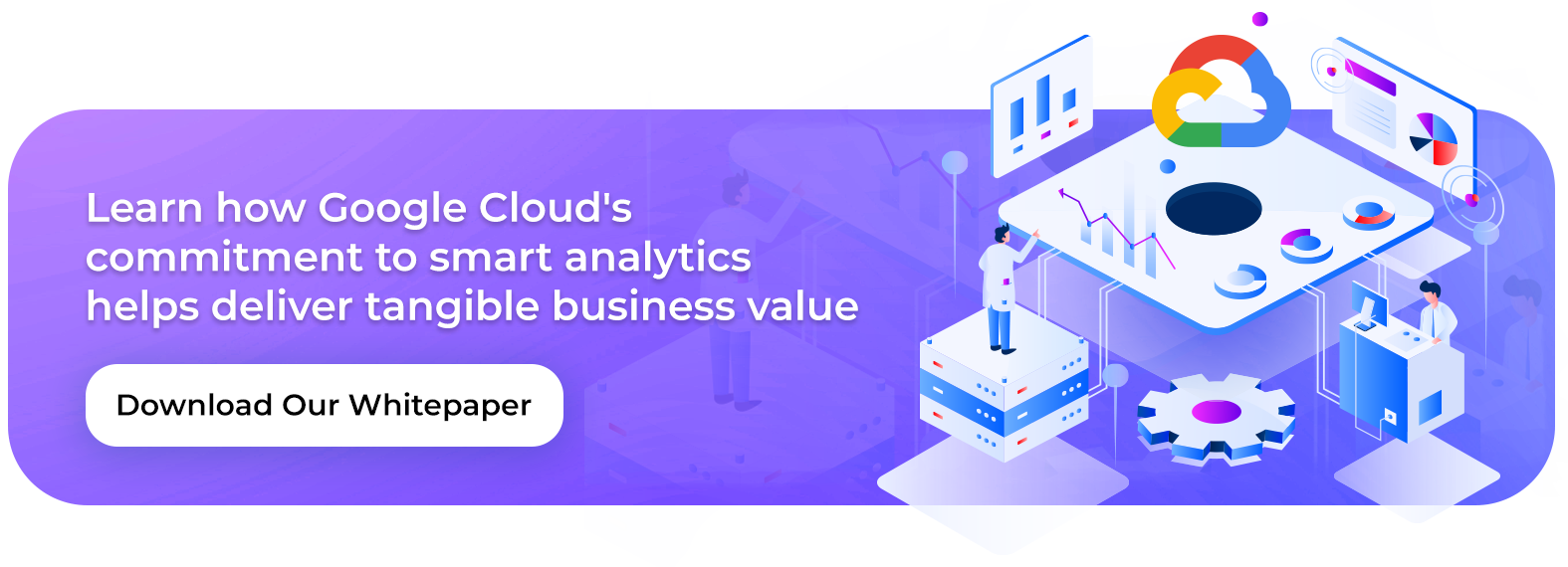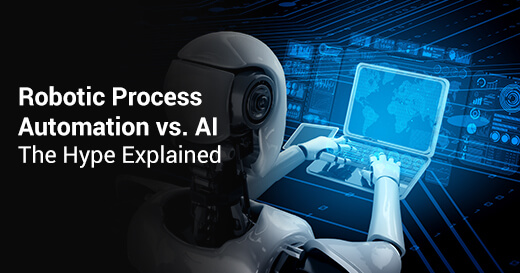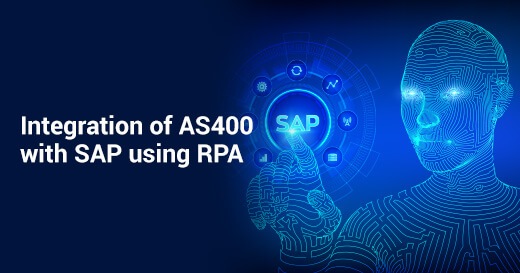Unify Data Analytics and Artificial Intelligence with Google Cloud Platform
Written by Priya George
Content WriterArtificial Intelligence and Data Analytics are the two fastest growing technologies today, with a projected CAGR of 38.1% and 13.2%, respectively. However, it is fast becoming common wisdom that both these technologies can achieve new heights when combined.
Augmented analytics is a term used to refer to today's enterprises' tendency to combine data analytics with machine learning, natural language processing, and AI.
This combination helps develop automated data preparation and analysis solutions, thus reducing the workloads for data scientists significantly. Furthermore, creating a unified data and artificial intelligence platform yields the following benefits:
Reduce Costs
Data siloes from various tools hobbles companies as they try to integrate solutions to create a complete data and AI lifecycle. By unifying data and AI within a single platform, companies reduce administrative and storage costs in one stroke.
Increase Productivity
With an easy-to-use, single platform for data analysis and AI, different personas, such as data scientists and AI/ML experts, can collaborate and contribute meaningful insights.
Mitigate Risk
Disparate tools makes it hard for companies to keep track of maintaining data privacy and security. A unified platform allows for in-built compliance.
Google Cloud Platform understands the advantages of building a cohesive data to AI workflow and has therefore created a data cloud that bridges the gap between data science and artificial intelligence. This blog will discuss two essential products representing this unified platform: Vertex AI Workbench and Vertex AI Model Registry.
Demand forecasting models are the best example of how data and AI can come together to deliver business value, such as effective supply chain management. Watch our webinar to learn how to build a demand forecasting model with tools like BigQuery ML.
Creating An Augmented Data Cloud on Google Cloud: A Focus on Vertex AI
In the 2022 Data Cloud Summit, Google Cloud Platform announced several new developments that helped create a unified data and AI platform. Vertex AI Workbench and Vertex AI Model Registry are two main announcements centered on Vertex AI products. While Vertex AI Workbench has been announced as generally available, Vertex AI Model Registry has only been recently introduced and is yet to be made available. If you are still getting started on Vertex AI, we recommend watching our video, where our AI expert breaks down how to build an ML pipeline on Vertex AI.
With Vertex AI Workbench, data science and AI/ML experts can access a unified platform to build and deploy machine learning models faster since the data engineering capabilities have been in-built. This allows data ingestion, analysis, deployment, and managing of ML models from a single user interface. In addition, Vertex AI Workbench helps bridge the gap between BigQuery data sets and Vertex AI capabilities. With integrations across data tools like DataProc, BigQuery, and Looker, Vertex AI can build and train models 5x faster than any notebook. Key features include:
- Native integration with BigQuery allows you to overview all BigQuery tables and public datasets with the connector option. And with Cloud Storage integration, unstructured data is accessible.
- Preview BigQuery tables, observe general statistics, run basic queries, and copy the BigQuery code to a fully managed notebook in Vertex AI in seconds.
- Quickly process data from notebooks by running them on Dataproc clusters.
- With scheduled executions of notebook code, data science and AI/ML experts can automate recurring updates.
- Integrate running a notebook within a pipeline with the help of Vertex AI Pipelines.
- Access fully managed and user-managed notebooks pre-packaged with deep learning packages and frameworks from TensorFlow and PyTorch.
Vertex AI Workbench pricing depends on three parameters: compute and storage resources, management fees, and additional Google Cloud resources such as BigQuery or Cloud Key Management Service (KMS). Costs for computing, storage, and additional resources are the same as with the official product pricing. In contrast, with management fees, pricing differs based on what type of notebook is used, with the management fee for managed notebooks SKUs being significantly higher than user-managed notebooks. Read this Google Cloud document to understand Vertex AI pricing better.
Vertex AI Model Registry is a Google Cloud product currently in preview, only for use in test environments. It is a repository where one has a complete overview and access to machine learning models regardless of type. At the same time, the program and data files are stored in Google Cloud Storage during the Vertex AI lifecycle. Therefore, this product helps better monitor, organize and train new versions. In addition, one can assign endpoints to the model from within this registry. Most importantly, with Vertex AI Model Registry, you can integrate BigQuery ML models directly to Vertex AI, thus accessing real-time prediction capabilities and MLOps tools. There are several important implications:
You can directly register a BigQuery model in Vertex AI without implementing database triggers or worrying about tracking ML-based metadata and lineage to guarantee quality in production.
ML model deployment has become much quicker by adding endpoints, specifying model settings, and monitoring (if needed). Then you can periodically send batch and prediction requests to the model.
Easily create new versions of ML models and keep track of the status and type of model with the help of model aliases and labels.
The launch of these two products indicates a dedication toward creating a data cloud that aims to drive data-driven digital transformation with in-built AI capabilities. Other product capabilities represent Google Cloud's commitment to creating a unified data and AI offering. For instance, with Document AI, you can create structured text data from unstructured sources and store the information with a BigQuery data warehouse. Combining data science and artificial intelligence enhances business operations such as supply chain analytics.
How Can Royal Cyber Help?
One of the main challenges companies face is how to leverage the capabilities offered by cloud platforms without incurring high costs for resources. This is where our Google Cloud-certified data scientists and AI/ML experts can help. Royal Cyber offers consulting and managed services, and our team can seamlessly collaborate to develop unique end-to-end solutions that meet business needs while maintaining cost-effectiveness.
To learn more about us, contact us at [email protected] or visit us at www.royalcyber.com.




